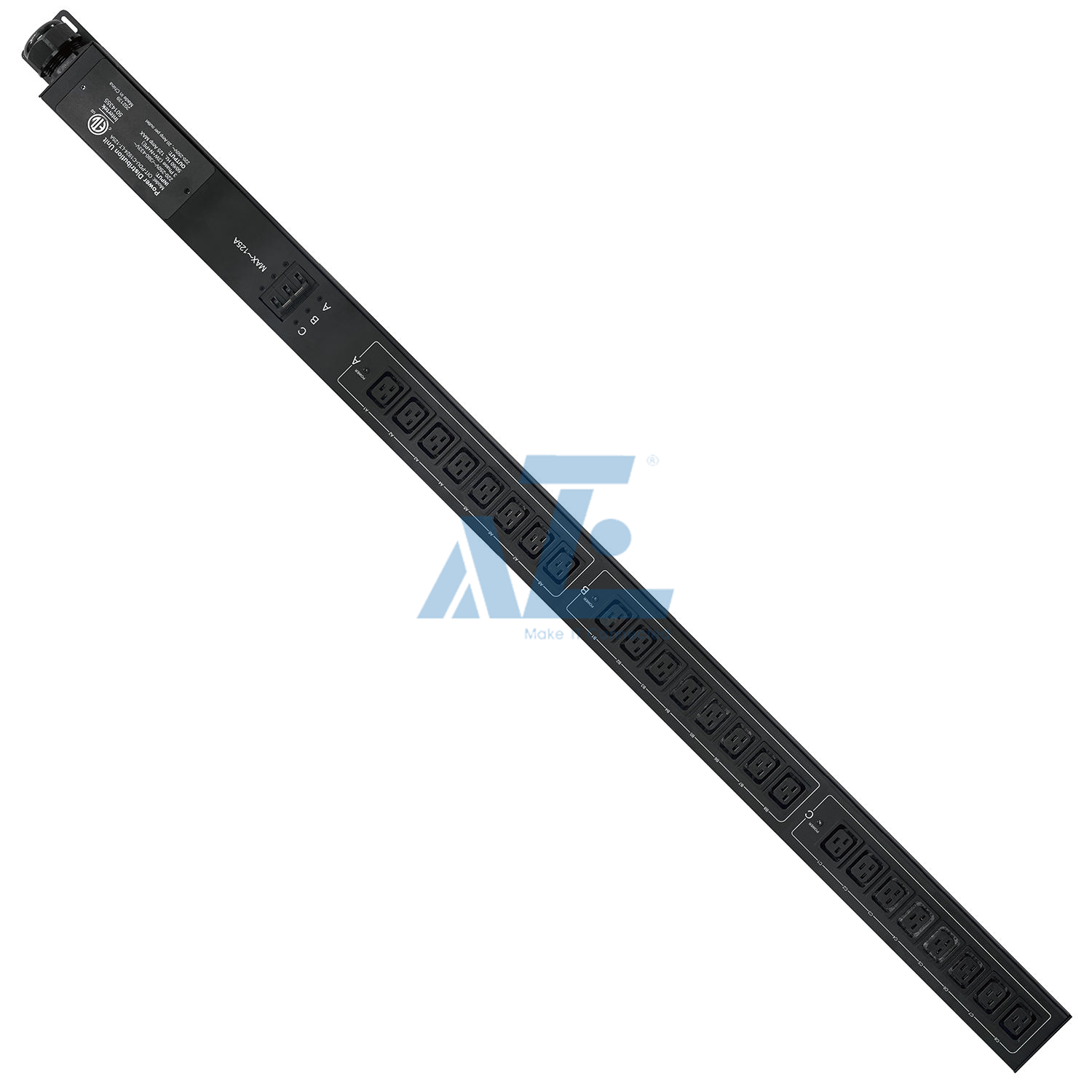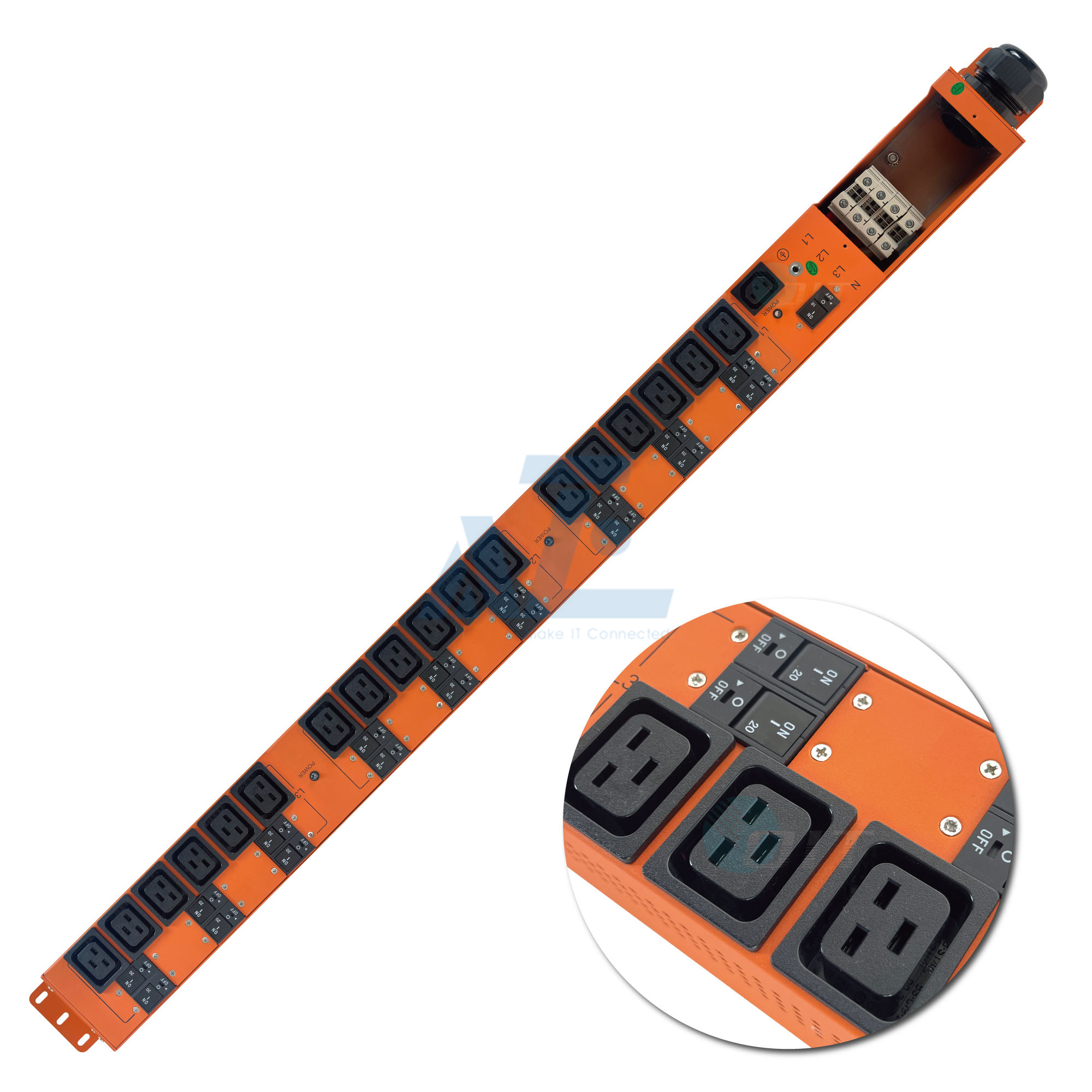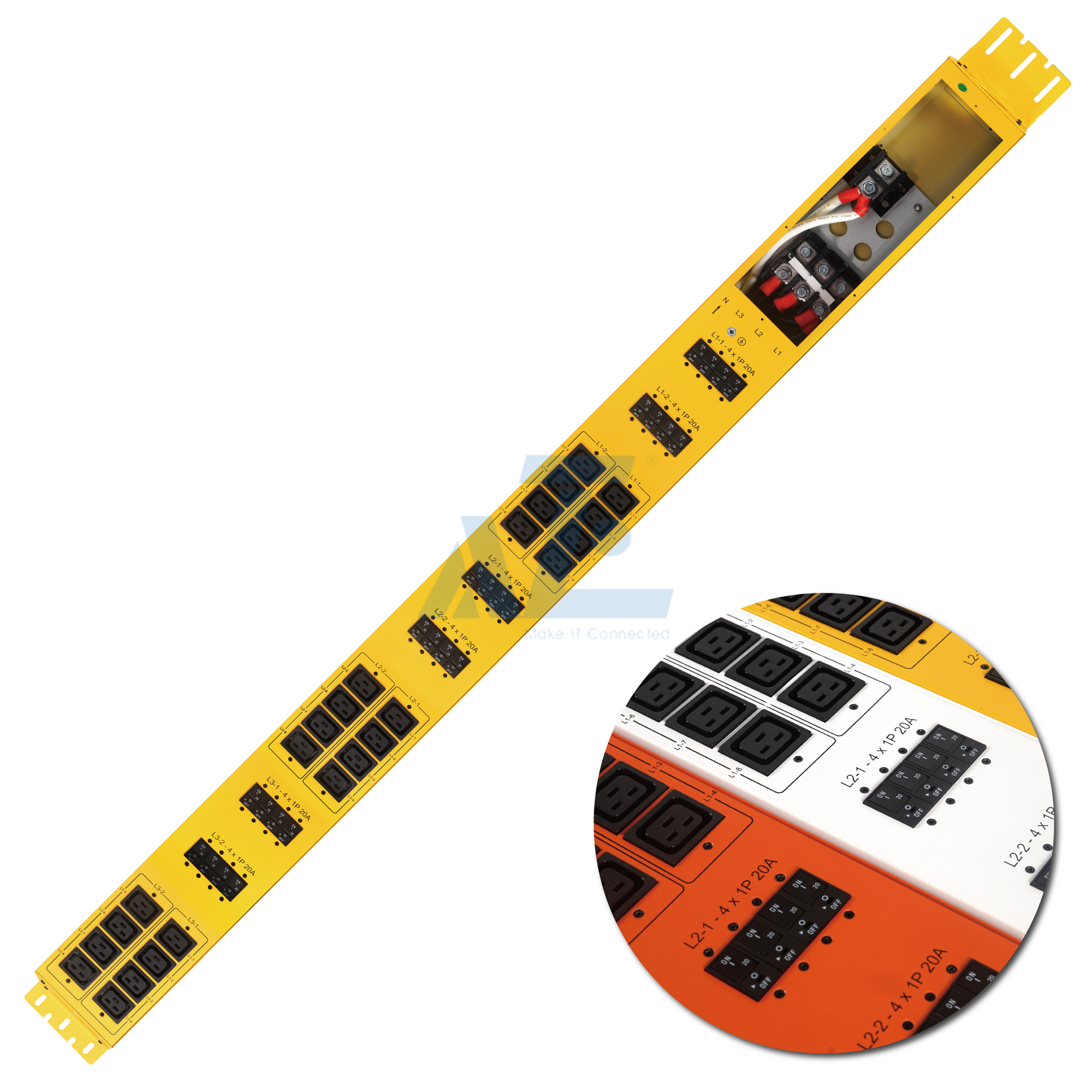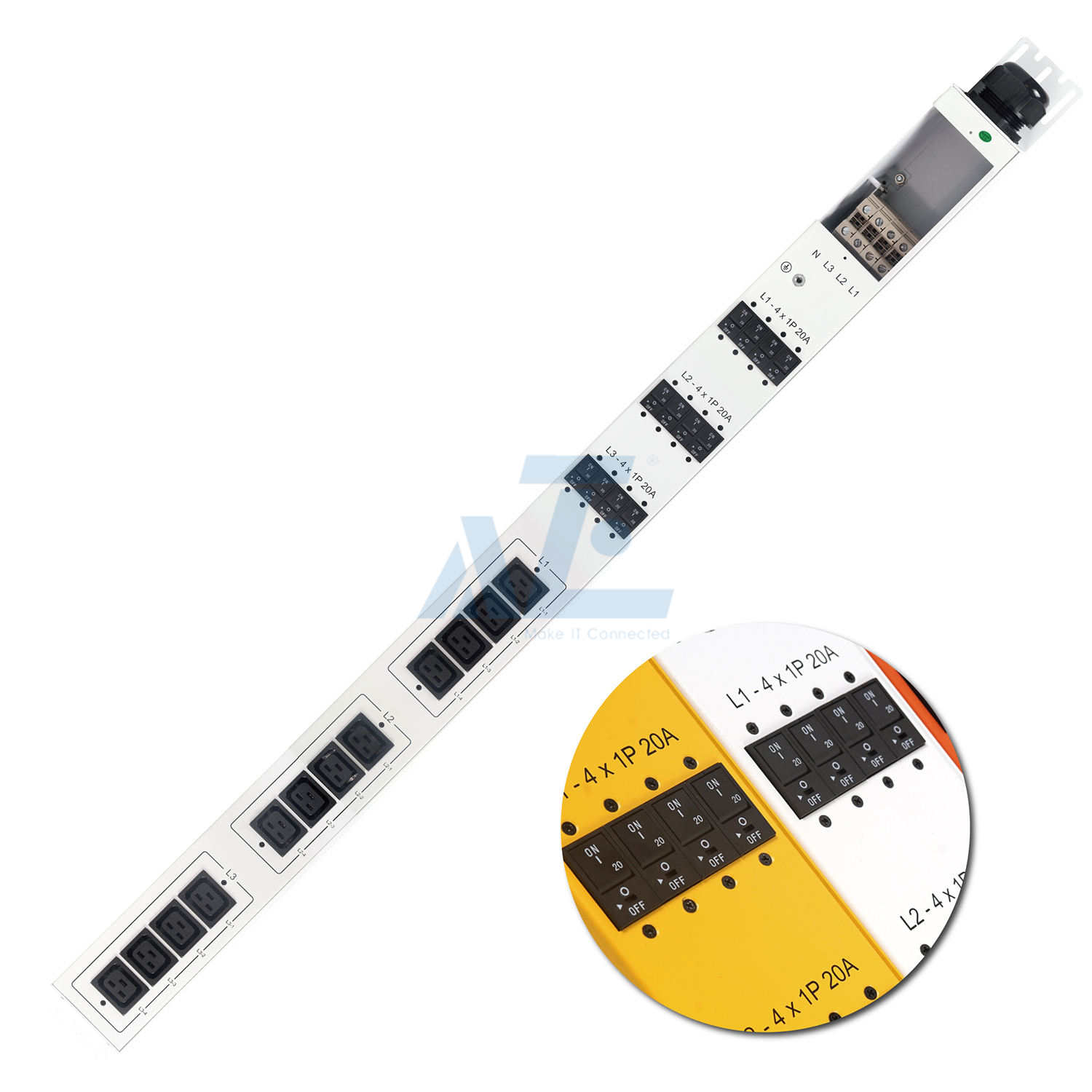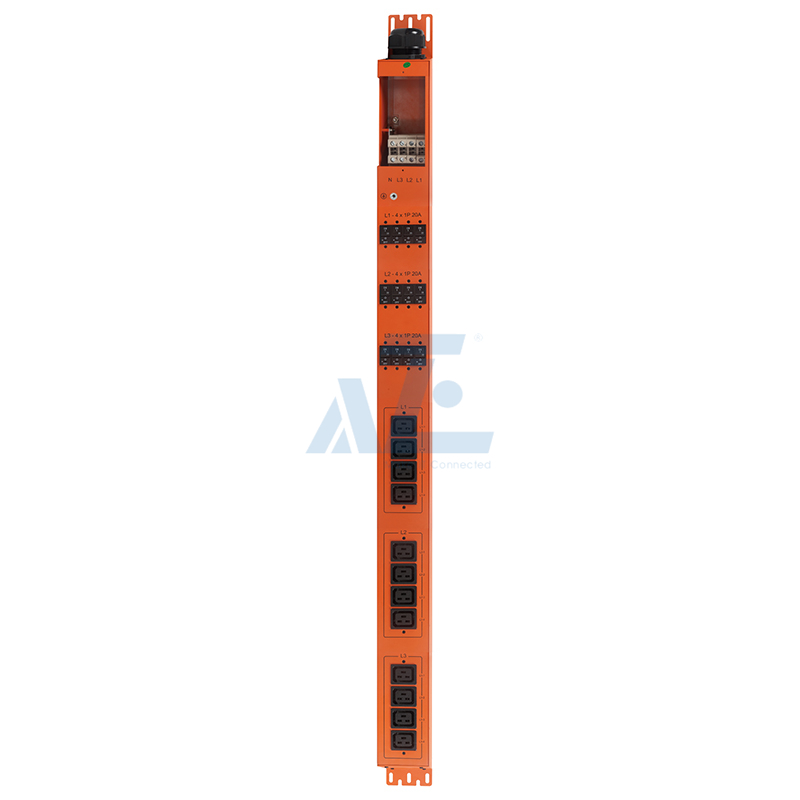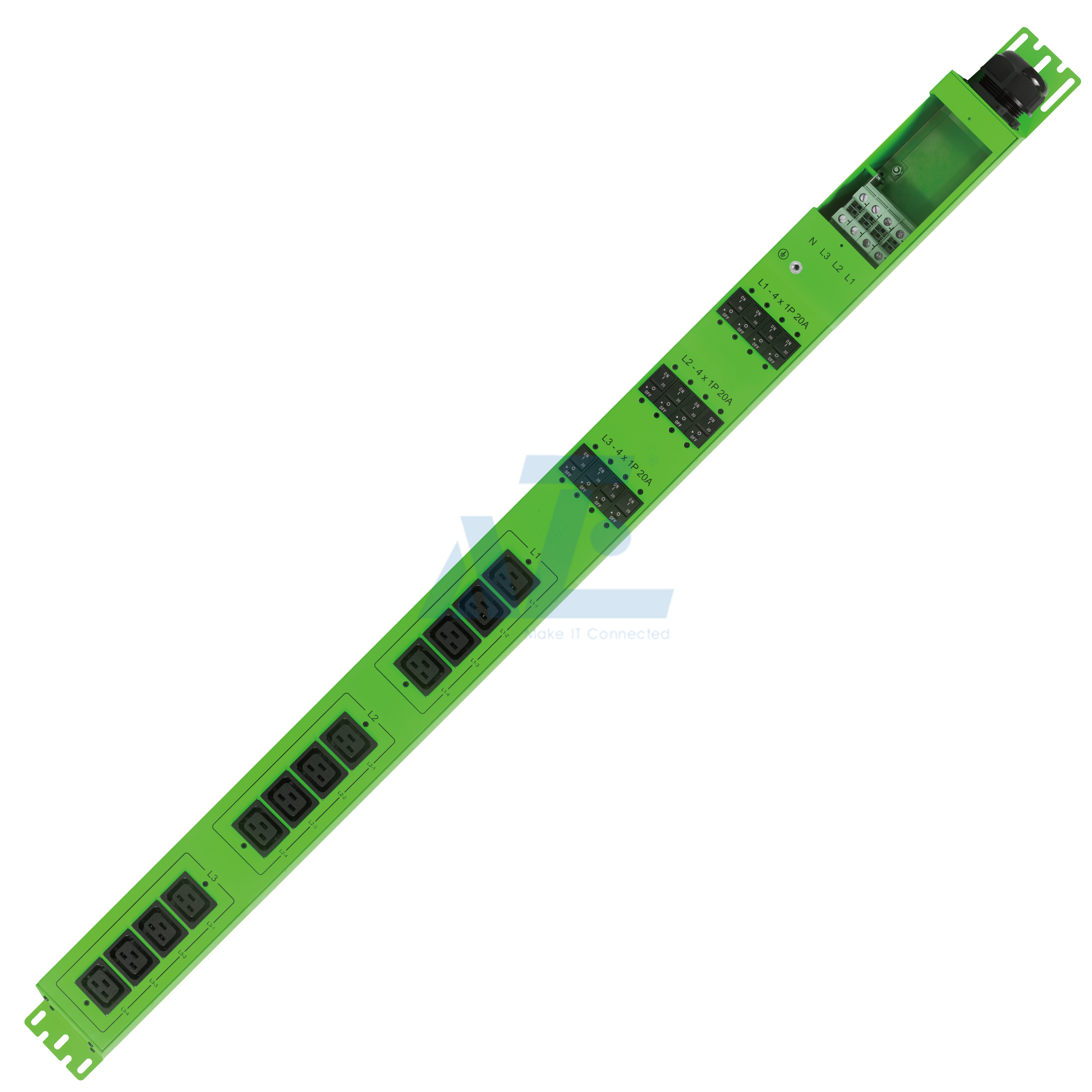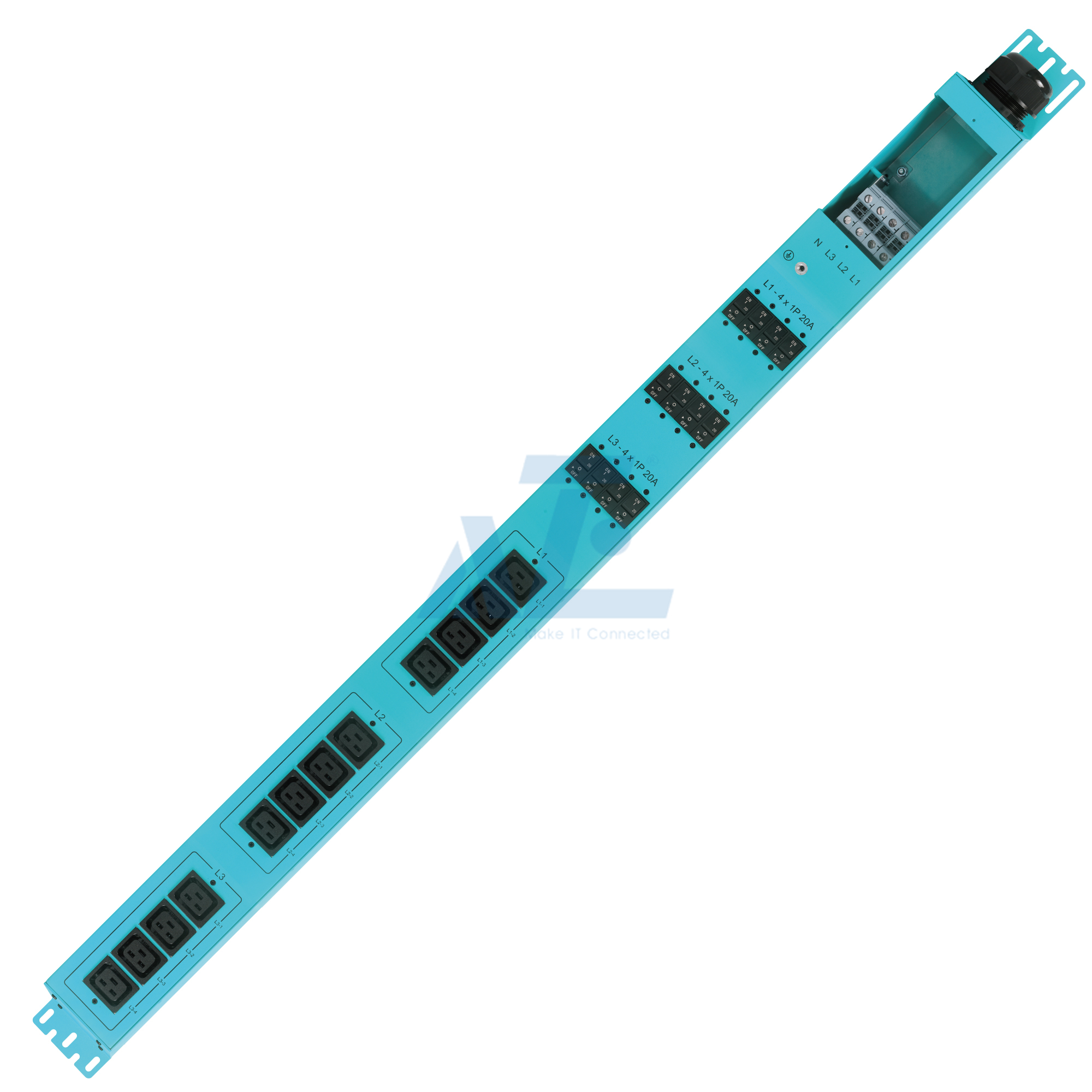Designing a power distribution system for a Crypto Mine can be a daunting task. At Raptor Power Systems, we have facilitated and manufactured the components for the deployment of over 1GW of miners. Below is a detailed description of the factors and components that go into a crypto mining power distribution. This will guide you through the product selection process and demonstrate best practices for the implementation of our products.
Low voltage in commercial and industrial crypto mining facilities comes in 3 main configurations;
- 208V 3 Phase Delta
- 240V/415V 3 Phase Wye
- 277V/480V 3 Phase Wye
Which one of these voltage configurations is the best? 240V/415V, hands down. This is not only the most efficient voltage, it is the cheapest to set up. One of the biggest advantages being that you can use single pole circuit breakers in your switchgear or breaker panel and use MUCH smaller breakers in regards to the current. Our most popular PDUs come in a 240V/415V configuration.
If you have 208V 3 Phase Delta, which is the second most common voltage configuration, you can run an efficient mine, but the supporting components, i.e. breaker panels, PDUs, wire, will cost significantly more.
If you have 277V/480V there are a few things to consider. You can run a mine on this voltage, but most standard components are not rated for this voltage. Even the outlets on the miners themselves, C13's and C19's, are only rated up to 250V. So even though most miners can accommodate a 277V input, the outlet on the power supply is only rated to 250V. We manufacture PDUs that are UL listed to 480V. The outlets on these PDUs are rated for 277V, but a special power cord, that we can provide, that converts to a standard C13 or C19, is required. In most cases, it is cheaper to drop the voltage from 277V/480V to 240V/415V than it is to try and utilize your existing voltage.
Our high power, high density PDUs are designed for crypto mining application
- Support high current loads (up to 125A)
- Protection against short circuits or overloads
- High level cybersecurity standards ( *smart PDU only )
- Billing grade power metering, 0.5% accuracy ( *smart PDU only )
- Be able to switch ON/OFF mining gear remotely (*smart PDU only)
Custom Your Own PDUs for Any Application.
Power Distribution Units (PDUs) are the ideal solution to enhance uptime and efficiency when managing and distributing power to networking, server, and computer equipment, especially when they are a part of data centers.
However, Power Distribution Units found in the market have varying specifications and features that don't always meet the needs of a specific purpose. That's where custom PDUs prove to be the perfect solution. Raptor Power Systems collaborates closely with valued customers to create a custom PDU tailored for their application-specific purposes.
A Power Solution For Your Unique Application
Going with standard products can limit what you can do with them. You may find that the product you purchased has missing features, and conversely, it has functions that you don't require for your application.
With a custom PDU, you will have complete control over your unit's internal and external specifications, such as:
- Input/Output Voltage Types
- Connector Type and Quality
- Output Circuit Breakers
- Enclosure Type
- Remote Control & Monitoring Options
- LCD Meter Display
- Various Additional features
Ensuring High-Quality Power
Your computer, security, communication, and other electronic equipment require clean and stable power to function optimally and reliably. Any noise in the input signal can cause poor performance, incorrect functionality, and damage. The ideal solution to counteract these problems is to use a custom PDU with the right specifications, such as:
- Protection from spikes with MOV and surge suppression modules
- Suppression of noise for a clean power output with EMI/RFI filtering
How to Choose a PDU for Crypto Mining
Selecting a PDU is a more complex process than many may imagine. There are so many variations that depend on the needs of the buyer, which is why there isn’t really a single go-to solution. These needs are described in the sections below:
The 80% Rule
The 80% rule is a rule of thumb in the mining community that dictates amount of power that should be run through a circuit breaker. Because of the continuous heavy current that ASIC miners draw, they can often flip a breaker even if they don’t theoretically use enough power to do so. Why? I’ll save you the science behind how a breaker works, but the TLDR is that household breakers are designed for household applications, Where the load is drawn intermittently rather than consistently. Below is a table showing the usable ampacity for each commonly available breaker type for your reference:
| Breaker Ampacity (A) | Usable Ampacity for Mining (A) | Usable Wattage at 240V (W) |
| 15 | 12 | 2880 |
| 20 | 16 | 3840 |
| 30 | 24 | 5760 |
| 40 | 32 | 7680 |
| 50 | 40 | 9600 |
As you can see, following the 80% rule does significantly decrease your per-circuit capacity, but following it is a must in order to avoid flipping breakers, downtime, and even fire hazards.
Converting Watts/Volts/Amps
Many who aren’t familiar with electrical calculations get confused about amps vs. volts vs. watts. Don’t be alarmed if you are as well, as all three unit types are quite simple to understand.
One common method to gain understanding is to think of an electrical wire as a pipe, and the electricity flowing through it as a fluid. With this model, the “speed” of the fluid would represent voltage, and the “pressure” of the fluid would represent amperage. The combined result of the 2 would be the amount of fluid flowing, which would represent amperage.
This model helps us understand the formula:
P = I * V
Where P represents Power in Watts, I represents amperage in Amps, and V represents Voltage in Volts. This formula can be manipulated to calculate any electrical specification needed to wire up your PDUs and miners.
If you don’t know what voltage powers your mining facility, you can always ask your electrician, or measure it yourself by using a multimeter. Most Canadian and American homes operate on 120/240V, but in rare cases such as high density residential, the voltage is 120/208V.
Single Phase vs. Three Phase
Choosing whether you need a single or three-phase PDU isn’t always as simple as finding out what power comes out our your transformer/into your facility. There are a few things to consider that can save you a both a hassle and money.
The first, is that having 3 phase power does not necessarily create a need for a three-phase PDU. You can simply use single phase PDUs hooked up from phase to phase, or from phase to neutral. This can be beneficial if the phases need specific balancing, and can save some cost. For example, you have a large load already present on one of your phases and need to balance it out with a load from your miners on the other phases. Additionally, it may in some cases be less expensive to buy three single-phase PDUs vs a single three-phase PDU, especially if you already have existing single phase wiring in place.
Rated Amperage (Single-Phase)
The right amperage for your PDU will depend entirely on which ASIC miners you plan to power. Since the calculations must consider a number of factors, we have devised some tables with the most common voltages for mining in North America for your convenience:
208V:
| Ampacity | Wattage (80%) | 1st Gen | 2nd Gen | 3rd Gen |
| 30 | 4992 | 4 | 2 | 1 |
| 50 | 8320 | 6 | 3 | 2 |
| 63 | 10483 | 8 | 4 | 3 |
| 80 | 13312 | 10 | 5 | 4 |
| 125 | 20800 | 15 | 8 | 6 |
240V:
| Ampacity | Wattage (80%) | 1st Gen | 2nd Gen | 3rd Gen |
| 30 | 5760 | 4 | 2 | 2 |
| 50 | 9600 | 7 | 4 | 3 |
| 63 | 12096 | 9 | 5 | 4 |
| 80 | 15360 | 11 | 6 | 5 |
| 125 | 24000 | 18 | 9 | 7 |
LEGEND:
- 1st Gen: Antminer S9 etc. (~1350W)
- 2nd Gen: Antminer S17 etc. (~2550W)
- 3rd Gen: Antminer S19 etc. (~3250W)
Rated Amperage (Three-Phase)
This portion of the guide covers 3 phase PDUs that operate from Phase to Phase. For 3 phase PDUs that operate on phase to neutral, you can simply use single phase calculations, and multiply the wattage result by 3.
When PDUs are wired phase to phase, the amperage equivalent must be multiplied by the square root of 3. Like the previous section, we’ll save you the hassle, and include a table for the common 120/208V Delta or Wye system:
208/120V:
| Ampacity | Wattage (80%) | 1st Gen | 2nd Gen | 3rd Gen |
| 30 | 8646 | 6 | 3 | 2 |
| 50 | 14411 | 10 | 6 | 4 |
| 63 | 18157 | 13 | 7 | 5 |
| 80 | 23057 | 17 | 9 | 7 |
| 125 | 36027 | 27 | 14 | 11 |
LEGEND:
- 1st Gen: Antminer S9 etc. (~1350W)
- 2nd Gen: Antminer S17 etc. (~2550W)
- 3rd Gen: Antminer S19 etc. (~3250W)
Surge Protection
A power surge is defined as:
“A fast, short duration electrical transient in voltage (voltage spikes), current (current spikes), or transferred energy (energy spikes) in an electrical circuit”, Wikipedia
A power surge can be caused by many factors including lightning, infrastructure failure, static electricity, and many more. A PDU with surge protection protects against voltage surges. This means that its internal surge protector will either short (providing a path of least resistance for the surge), or open (disconnecting the circuit entirely) when a surge in voltage that exceeds its safe threshold.
Surge protection is useful for regions with “dirty” power where outages and infrastructure failure are common. While miners do have some integrated protection against current spikes, a voltage surge that goes unprotected can easily kill your miners’ power supplies and in some cases, even the hash boards and control boards.
The conclusion: surge protection is generally only needed when mining in a rural area. When mining inside an urban area such as at home, or in an industrial park, the power generally stays well within safe levels, meaning that surge protection is an extra cost that isn’t necessary, but can still be chosen for peace of mind.
Main Breaker
Some PDUs include a main breaker. This means that they have an integrated breaker for additional protection. Generally, PDUs are attached to a circuit that already has a breaker in the panel, so why would one need a PDU with another breaker?
PDUs with an integrated breaker are often only used with a circuit that has a larger breaker in the main panel. For example, you have a circuit that has a single 100A breaker in the panel, and the circuit has 2 50A outlets. In this use case, PDUs with an integrated breaker would be a smart addition in order to ensure that the input wire and plug of the PDU (which would be rated for 50A) never exceed 50A in total.
Individual Fusing
Some PDUs offer individual fusing for each miner. This means that each outlet will be ensured to never exceed its specified Ampacity. This option provides the utmost safety for your facility and mining equipment. However, the main disadvantage is that these PDUs are generally very cost prohibitive and hard to come by for smaller ampacity PDUs.
Don't see what you need? Let us custom for you! Every unit can be customized to meet your needs or we can design from the ground up. Contact us for details,our experienced engineers are specialized in creating high-reliability PDUs that combine elegant designs with excellent function. So you can rest assured that you'll get your own custom PDUs with AZE.

